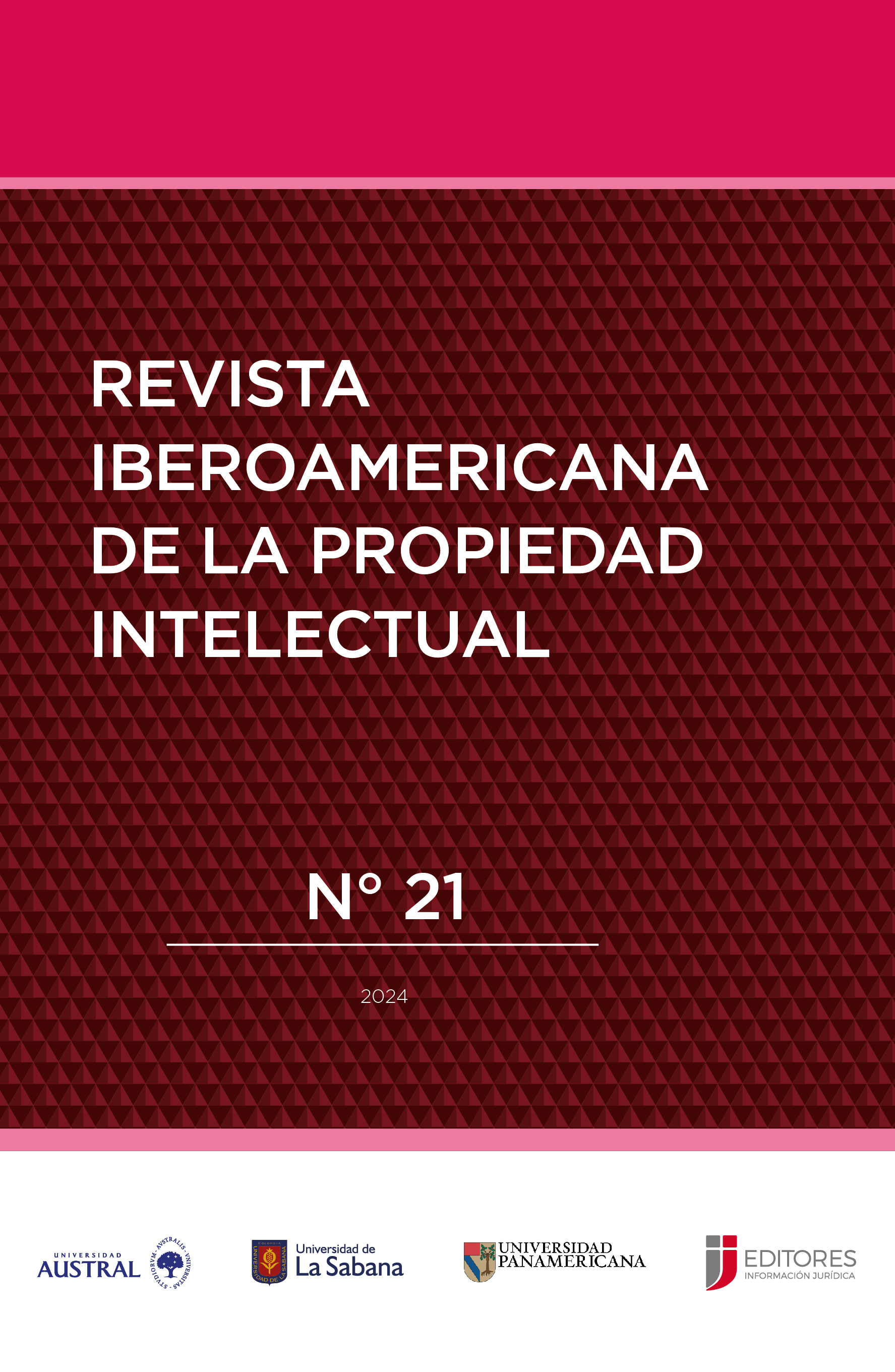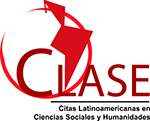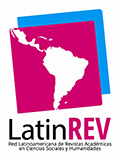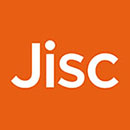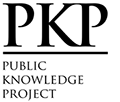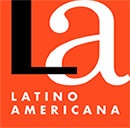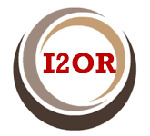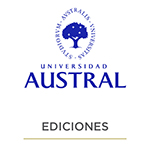The Guaranteed Traditional Specialties Applicable to Peruvian Gastronomy Products
Abstract
Peru has specific regulations on Traditional Guaranteed Specialties, considered a new element of industrial property, whose ownership corresponds to the Peruvian State, which provides recognition of its existence through the National Institute for the Defense of Competition and the Protection of Intellectual Property. However, their function is little known, so the aim is to determine how Guaranteed Traditional Specialties could help promote and give added value to the products of Peruvian gastronomy. To achieve the stated objective, specialized literature, comparative law, interviews with national and foreign specialists, statistical data, and in situ observation of the procedure used by the only traditional product, already recognized, have been used.
Faced with this, the Traditional Guaranteed Specialties could promote the recognition and distinction of Peruvian gastronomy products, by the national and international consumer, who will be able to recognize the traditionally Peruvian recipes, ingredients and/or preparation methods used in the preparation of said products, and thus you will be able to differentiate them from their similar ones, which will give added value to these products, a value that the consumer will be willing to pay, which will promote gastronomic tourism and the economic growth of Peru.
Downloads
References
Angulo, J. (1 de setiembre de 2023). Obtenido de La Gastronomía peruana: un análisis del impacto económico y cultural de nuestro país. Infobae. https://www.infobae.com/peru/2023/09/01/la-gastronomia-peruana-un-analisis-del-impacto-economico-y-cultural-de-nuestro-pais/.
Asamblea Nacional República de Ecuador. (9 diciembre de 2016). Código Orgánico de la Economía Social de los Conocimientos, Creatividad e Innovación. Registro Oficial. https://www.gobiernoelectronico.gob.ec/wp-content/uploads/2018/10/Codigo-Organico-de-la-Economia-Social-de-los-Conocimientos-Creatividad-e-Innovacion.pdf.
Binimelis, H. (2016). Brazil and Chile: Several strategies of commercial integration; Different industrial property laws and policies. Vniversitas, 64(131), 195-230. https://doi.org/10.11144/Javeriana.vj131.bcde.
Bugallo, B. (2020). Creaciones Gastronómicas y su protección legal, con especial referencia a la propiedad intelectual. Revista de Derecho, 19(38), 13-53. https://doi.org/10.47274/DERUM/38.2.
Bugallo, B. (2023). From the cluster to the glass: Intellectual Property in the world of wine. Revista de Derecho, 22(44), 83-137. https://doi.org/10.47274/DERUM/44.5.
Calle, F. (2021). Reconocimiento y protección de las Especialidades Tradicionales Garantizadas en el merco jurídico ecuatoriano (tesis de licenciatura). Repositorio Institucional, Universidad Metropolitana. https://repositorio.umet.edu.ec/bitstream/67000/512/1/CALLE%20RAZA%20FANNY%20JANETH.%20DERECHO.pdf.
Comisión de la Comunidad Andina. (14 de setiembre de 2000). Decisión N.° 486-CAN. Instituto Nacional de Defensa de la Competencia y de la Protección de la Propiedad Intelectual. https://www.gob.pe/institucion/indecopi/normas-legales/1683529-486-can.
Comisión Europea. (21 de junio de 2024). Registro de las Especialidades Tradicionales Garantizadas. https://ec.europa.eu/agriculture/eambrosia/geographical-indications-register/tsg.
Delgado, J. (2018). Alimentación, cocina y biodiversidad: el origen del boom gastronómico del Perú. Sociedad Suiza de Americanistas, (10).
El Perú es el mejor destino cultural y culinario global. (2 de diciembre de 2023). El Peruano. https://www.elperuano.pe/noticia/230344-el-peru-es-el-mejor-destino-cultural-y-culinario-global#:~:text=En%20agosto%20de%20este%20a%C3%B1o,Mejor%20destino%20l%C3%ADder%20de%20Sudam%C3%A9rica.
García, C. (2020). Propiedad Intelectual y Turismo Gastronómico en el Perú y otros paises en desarrollo: fomento del desarrollo del turismo gastronomico a través de la Propiedad Intelectual. Estudio Exploratorio. Organización Mundial de de la Propiedad Intelectual. https://www.wipo.int/ip-development/es/agenda/projects/peru.html.
García Muñoz, L. y Jiménez, A. (s.f.). Propiedad Intelectual y Tradiciones Culinarias en el Perú. Organización Mundial de de la Propiedad Intelectual. https://www.wipo.int/export/sites/www/ip-development/es/docs/ip-analysis-peru.pdf.
Gómez Apac, H. y Rodríguez Noblejas, K. (31 de enero de 2020). Las especialidades tradicionales garantizadas (etg): una herramienta para promover el turismo gastronómico. Revista PI Ecuador, (18). https://www.tribunalandino.org.ec/libros/2020EspecialidadesTradicionalesGarantizadas.pdf.
Instituto Nacional de Defensa de la Competencia y de la Protección de la Propiedad Intelectual. (2023). Resolucion N° 13299-2023/DSD-INDECOPI. https://servicio.indecopi.gob.pe/buscadorResoluciones/propiedad-intelectual.seam.
Instituto Nacional de Defensa de la Competencia y de la Protección de la Propiedad Intelectual. (9 de noviembre de 2023). El Indecopi destaca la Denominación de Origen Chulucanas como orgullo del país a través de la campaña ¡Me ha pasado! https://www.gob.pe/institucion/indecopi/noticias/863887-el-indecopi-destaca-la-denominacion-de-origen-chulucanas-como-orgullo-del-pais-a-traves-de-la-campana-me-ha-pasado.
Instituto Nacional de Defensa de la Competencia y de la Protección de la Propiedad Intelectual. (2024). Certificado N° 38716. https://pi.indecopi.gob.pe/consultatutramitedemarcas/#/consulta-certificado.
Jeambey, Z. (2016). Rutas Gastronómicas y Desarrollo local: un ensayo de conceptualización en Cataluña. Pasos. Revista de turismo y patrimonio cultural, (12).
Lopes, C., Rengifo-Gallego, J. y Leitao, J. (2022). Evolution of the Production and Commercialization of Regional Products With PDO, PGI and TSG in Extremadura (Spain) and Região Centro (Portugal) From 2008 to 2018. Revista Portuguesa de Estudos Regionais, (61), 27-48. https://www.review-rper.com/index.php/rper/article/view/529/432.
Martínez, I. (9 de Junio de 2022). 3 motivos para pasar de una ETG a una IG en el jamón serrano. Cortador de Jamón Profesional Iván Martinez: https://cortadordejamonbajoaragon.es/3-motivos-para-pasar-de-una-igp-a-una-etg-en-el-jamon-serrano/.
Medina Muñoz, L. (2024). Legal System for the Protection of Intellectual Property Reghts in Colombia: Evolution and Conteporary Trends. Revista Iberoamericana de la Propiedad Intelectual, (20), 7-30. https://doi.org/10.26422/RIPI.2024.2000.med.
Ministerio de Economía de la República Argentina. (s.f.). Indicación geográfica y Denominación de Origen. Secretaría de Agricultura, Ganadería y Pesca. https://alimentosargentinos.magyp.gob.ar/HomeAlimentos/igdo/preguntas-frecuentes.php.
Moreno, A. M. (17 de julio de 2019). El impacto de la gastronomía peruana en el turismo y el mercado del país. Universidad Santo Tomás. https://repository.usta.edu.co/handle/11634/17755.
Oficina Española de Patentes y Marcas. (2019). El secreto está en la marca. Organización Mundial de la Propiedad Intelectual. https://www.oepm.es/export/sites/oepm/comun/documentos_relacionados/Publicaciones/Folletos/El_secreto_esta_en_la_marca.pdf.
Palomino, M. (2016). Gourmetización del alimento andino y la estetización del agricultor como parte del boom gastronómico peruano. Razón y Palabra, (14).
Parlamento Europeo y Consejo. (18 de octubre de 2023). Reglamento (UE) 2023/2411 del Parlamento Europeo y del Consejo. Agencia Estatal Boletín Oficial del Estado. https://www.boe.es/buscar/doc.php?id=DOUE-L-2023-81514.
Parlamento Europeo y del Consejo. (11 de abril de 2024). Reglamento (UE) 2024/1143. Diario Oficial de la Unión. https://eur-lex.europa.eu/legal-content/ES/TXT/HTML/?uri=OJ:L_202401143&qid=1724891794544.
Pomares Caballero, M. (2019). Especialidades tradicionales garantizadas (ETG): rescatando los métodos, tradiciones y las recetas de cocina. https://asipi.org/lima2019/wp-content/uploads/sites/17/2019/11/Especializadas-Tradicionales-Garantizadas-ETG-Mario-Pomares-V1.pdf.
Presidencia del Consejo de Ministros. (11 de febrero de 2021). Decreto Legislativo N.° 1397. Plataforma digital única del Estado Peruano. https://www.gob.pe/institucion/pcm/normas-legales/1666961-1397.
Presidencia del Consejo de Ministros. (16 de noviembre de 2021). Decreto Supremo N.° 170-2021-PCM. Diario Oficial el Peruano. https://www.gob.pe/institucion/indecopi/normas-legales/3319908-170-2021-pcm.
Rodríguez, M. (2020). Los saberes, técnicas y representaciones de la cocina y gastronomía. En Guardia, S. B., Gastronomia Peruana, Patrimonio cultural de la humanidad (p. 294). Universidad de San Martín de Porres.
Secretaría de Educación Superior, Ciencia, Tecnología e Innovación. (17 de noviembre de 2020). Acuerdo No. SENESCYT-2020-077. https://sayce.com.ec/wp-content/uploads/2024/05/REGLAMENTO-DE-GESTION-DE-LOS-CONOCIMIENTOS-FINAL-signed.pdf.
Seminario, D. (14 de octubre de 2015). Francesco de Sanctis. “A partir del boom de la gastronomía nace el espíritu de los jóvenes de querer ser cocineros y revalorizar lo nuestro. Universidad de Piura. https://www.udep.edu.pe/hoy/2015/10/a-partir-del-boom-de-la-gastronomia-nace-el-espiritu-de-los-jovenes-de-querer-ser-cocineros-y-revalorizar-lo-nuestro/.
Silva, M. (12 de mayo de 2016). “Fomentemos el turismo gastronómico como estrategia de crecimiento”. Andina. https://andina.pe/agencia/noticia-fomentemos-turismo-gastronomico-como-estrategia-crecimiento-612261.aspx.
Unión Internacional para la Protección de las Obtenciones Vegetales. (2011). Preguntas frecuentes. https://www.upov.int/about/en/faq.html.
Universidad San Ignacio de Loyola. (s.f.). La gastronomía peruana, agente promotor del desarrollo económico. https://blogs.usil.edu.pe/novedades/la-gastronomia-peruana-agente-promotor-del-desarrollo-economico.
Copyright (c) 2024 Lourdes Milagros Suárez Mallqui, Milushka Rojas Ulloa

This work is licensed under a Creative Commons Attribution-NonCommercial-NoDerivatives 4.0 International License.
This license allows the copy, distribution, exhibition and representation of the work provided authorship is acknowledged and the work is properly quoted. Commercial use of the original work or the generation of derived works are not allowed.
The authors hereby guarantee the right to the first publication of the work to the Revista Iberoamericana de la Propiedad Intelectual.

